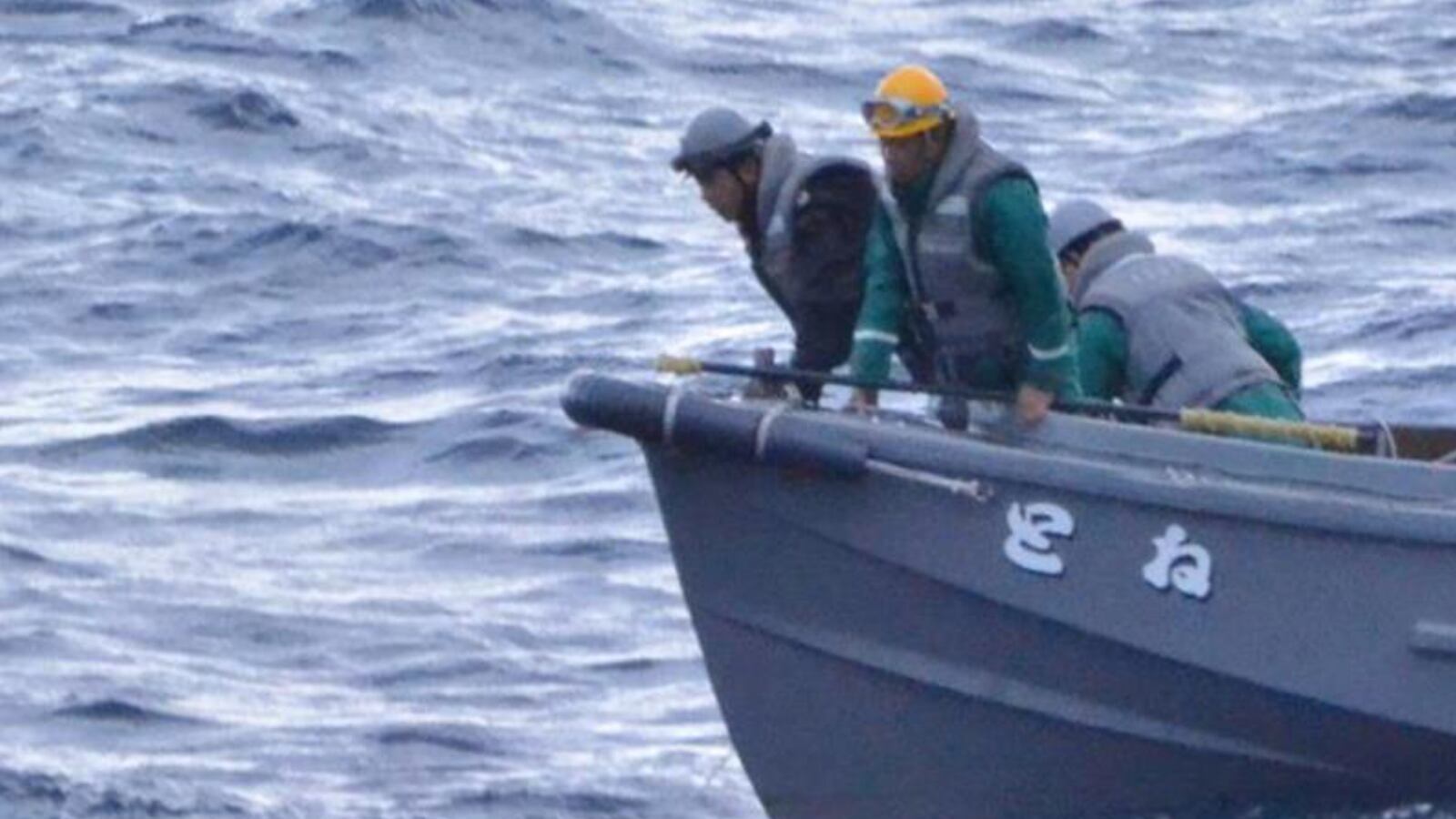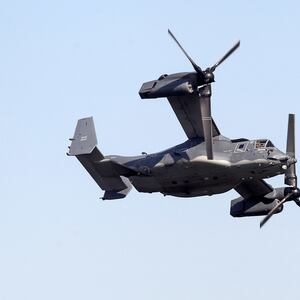Investigators found that the “catastrophic” failure of a gearbox, compounded by pilot actions, caused an Osprey military aircraft to crash off the coast of Japan last year, killing all eight personnel onboard, the U.S. Air Force said Thursday.
The CV-22 Osprey’s crash on Nov. 29 was the fourth in a string of fatal Osprey crashes over the past two years that have killed 20 service members. The latest incident caused a monthslong grounding of the military’s 400-strong fleet and spurred a major safety investigation into the craft’s unique design.
In the report released Thursday and obtained by the Associated Press, investigators said they’d determined that a pinion gear inside the Osprey’s proprotor gearbox had cracked about 40 minutes into an otherwise routine training flight out of Yokota Air Base.
ADVERTISEMENT
The malfunction triggered a cockpit alert known as a chip burn warning, indicating that the aircraft’s gears were flaking, leaving tiny metal chips in the gearbox. The phenomenon is common in the military, with NBC News reporting earlier this year that there had been at least seven instances of gearbox chipping without fatalities since July 2022.
But as five more warnings occurred over the next 50 minutes or so, the crew continued to monitor the situation, rather than land as a precaution, investigators found. Even during the final three warnings, when they were advised to “land as soon as possible,” the Osprey pilot Maj. Jeff Hoerneman and his crew displayed an “insufficient sense of urgency,” investigators said.
By the time they confirmed an onboard emergency, aborted the mission, and began an emergency landing, it was too late, investigators found. The pinion gear had disintegrated, with a piece breaking off and wedging itself between other components, causing the left proprotor to stop turning.
A cascade of mechanical failures then took place, sending the Osprey into a spin. It rolled over twice a half-mile away from the runway, slamming into the water nose-down. The remains of seven crew members were recovered during the 43-day search that took place after the crash. The eighth, Maj. Eric V. Spendlove, was never found.
Lt. Gen. Michael Conley, the head of Air Force Special Operations Command, who led the investigation, told reporters at a Wednesday briefing that, while the report faults the crew, there was “nothing to indicate that they did anything deliberately to violate any policy,” according to Military.com.
“If they were alive today, I would fly with them,” he said, NBC reported.
As for Hoerneman’s decision to delay landing and focus on completing the mission, Conley said the service encouraged that kind of mindset.
“To a degree, it’s a way of life here. I mean, we want people in this command that are biased towards ‘yes,’ biased towards getting the mission done,” he said, according to the Associated Press.
The Pentagon cleared the military to return their Ospreys to the skies in March, roughly four months after the fleet was grounded. The Air Force’s investigation was completed in May.
While the root cause of the pinion gear’s failure in the November crash is still under review by engineers, the Air Force has instituted a number of precautionary measures in the meantime, including directing crews to land as soon as practical after one chip burn warning.
Besides Hoernemann and Spendlove, the personnel killed in the crash were identified as Maj. Luke A. Unrath; Capt. Terrell K. Brayman; Tech. Sgt. Zachary E. Lavoy; Staff Sgt. Jake M. Turnage; Senior Airman Brian K. Johnson; and Staff Sgt. Jake Galliher.
The incident marks the deadliest CV-22 crash in Air Force history.







